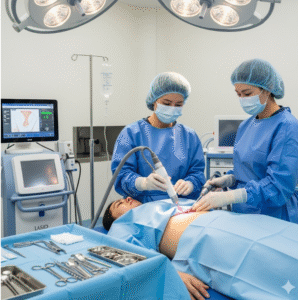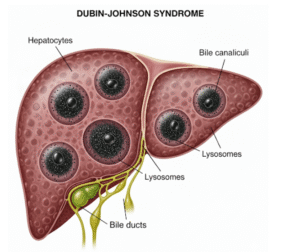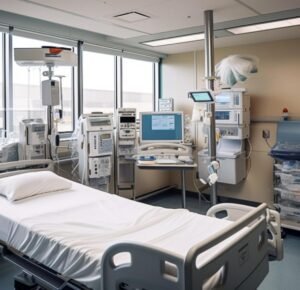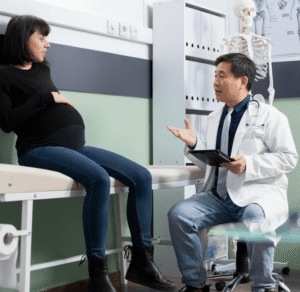Overview
Bunions, medically known as hallux valgus, are bony bumps that form at the base of the big toe, causing the joint to protrude outward. This misalignment of the toe can lead to pain, swelling, and difficulty walking, especially when aggravated by tight or narrow footwear.
In Korea, bunions are commonly treated in orthopedic and podiatry clinics, where both conservative and surgical options are available. Korean healthcare emphasizes early diagnosis, lifestyle modifications, and minimally invasive surgical techniques to relieve pain, restore toe alignment, and improve mobility.
What is a Bunion?
A bunion is a structural deformity of the foot, characterized by:
- Lateral deviation of the big toe toward the other toes
- Bony prominence at the metatarsophalangeal (MTP) joint
- Soft tissue inflammation and swelling around the joint
Bunions can develop gradually over time or in some cases appear more rapidly due to injury or congenital factors. While bunions themselves are not dangerous, they can cause chronic discomfort and functional problems if untreated.
Symptoms
Symptoms of bunions vary depending on severity and duration, and may include:
- Visible bony bump on the side of the foot at the base of the big toe
- Pain or tenderness at the MTP joint, especially when wearing tight shoes
- Swelling and redness around the affected joint
- Calluses or corns where the big toe rubs against adjacent toes
- Limited movement of the big toe
- Difficulty walking or performing physical activities due to discomfort
- Changes in foot shape, sometimes affecting overall gait
Early symptoms may be mild, but as the bunion progresses, pain and deformity typically worsen.
Causes
Bunions arise from a combination of genetic, structural, and external factors:
- Genetic predisposition, including inherited foot shape and structure
- Abnormal foot mechanics, such as flat feet, low arches, or overpronation
- Wearing tight, narrow, or high-heeled shoes that compress the toes
- Arthritis, particularly inflammatory types like rheumatoid arthritis
- Foot injuries that alter joint alignment
- Neuromuscular conditions affecting foot movement or posture
Risk Factors
- Female sex, due to footwear choices and foot anatomy
- Family history of bunions or foot deformities
- Occupation or lifestyle involving prolonged standing or tight footwear
- Age, as bunions often develop gradually over time
- Existing foot problems, such as hammertoes or metatarsalgia
- Rheumatoid arthritis or other joint disorders
Complications
If bunions are left untreated, they can lead to:
- Chronic pain, affecting daily activities and quality of life
- Hammertoes, claw toes, or overlapping toes due to altered foot mechanics
- Calluses, corns, or skin ulcers from friction with footwear
- Reduced mobility and changes in gait, potentially leading to knee, hip, or back problems
- Difficulty finding comfortable shoes due to foot deformity
- Surgical complications if treatment is delayed and deformity becomes severe
Prevention
While not all bunions are preventable, certain measures can reduce risk or slow progression:
- Wearing properly fitting shoes with wide toe boxes
- Avoiding high heels or shoes that compress the toes
- Using orthotic inserts to support arches and correct foot mechanics
- Regular foot exercises to strengthen muscles and maintain flexibility
- Monitoring early signs, such as mild swelling or pain at the big toe joint
- Maintaining a healthy weight to reduce pressure on the feet
Treatment Options in Korea
Diagnosis
Diagnosis involves clinical evaluation and imaging studies:
- Physical examination of the foot to assess deformity, swelling, and pain
- X-rays to measure the angle of toe deviation and joint alignment
- Gait analysis to determine how the bunion affects walking
- Assessment of footwear and daily activities contributing to the deformity
Conservative Management
Mild bunions are often managed without surgery:
- Footwear modifications, including wider shoes and custom orthotics
- Padding or splints to protect the bunion and reduce friction
- Activity modifications to minimize pain-inducing movements
- Anti-inflammatory medications (NSAIDs) for pain and swelling
- Physical therapy, including stretching and strengthening exercises
Surgical Interventions
When conservative measures fail or the bunion is severe, surgery may be recommended:
- Bunionectomy, the removal of the bony prominence
- Osteotomy, realignment of the bones to correct deformity
- Arthrodesis, fusion of the affected joint in severe cases
- Minimally invasive or laparoscopic bunion surgery, increasingly offered in Korean orthopedic centers to reduce recovery time and scarring
- Post-surgical rehabilitation, including physical therapy and gradual weight-bearing
Supportive Care
- Regular follow-up to monitor healing and prevent recurrence
- Custom footwear or orthotics after surgery
- Pain management and anti-inflammatory medications during recovery
- Foot care education, including proper hygiene and exercise
Prognosis
With timely treatment, bunions generally have a favorable prognosis:
- Conservative treatment can relieve pain and slow progression in mild cases
- Surgical correction often restores alignment, reduces pain, and improves function
- Minimally invasive procedures in Korea offer faster recovery and fewer complications
- Post-treatment adherence, including footwear modifications and exercises, is crucial to prevent recurrence
- Patients can regain mobility, resume daily activities, and improve overall quality of life
Bunions in Korea are effectively managed through early detection, advanced orthopedic care, and lifestyle modification, ensuring that patients maintain foot health, mobility, and comfort.













